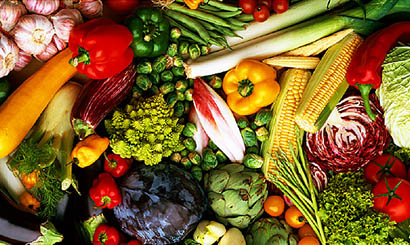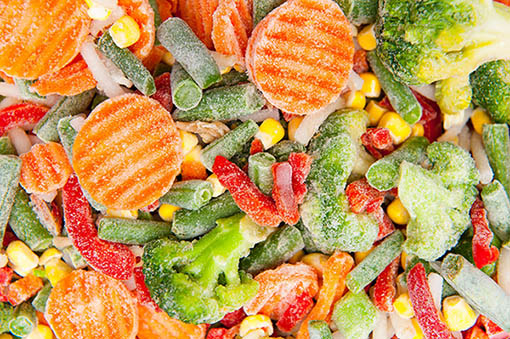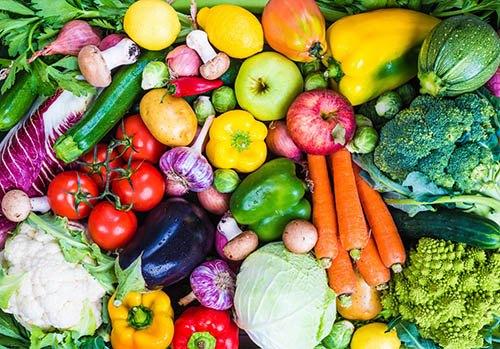Ways of storing vegetables

In practice, many methods of storing vegetables are used. The method of storage is also selected depending on the size and development of the farm. In small farms, this will be traditional methods, which allow you to achieve average effects, but they do not require large investments and the use of modern technologies and specialist knowledge. In large specialized farms it will be the storage of vegetables using new technologies.
Traditional ways of storage:
• Wintering in the field – in which vegetables grew or their collection and accumulation in previously prepared beds, in winter, the beds must be covered (parsley, celery).
• Top-up – it is placing vegetables in pits and covering their roots and lower parts with a layer of soil (parsley, by, cauliflower, chives), a roofing should be made over the pits.
• Piling – consists in laying vegetables in layers or loose on the surface, then covering the vegetables with a layer of straw and earth, to protect against frost (root vegetables).
• Storage in dugouts – walls and roof should be made of wood or concrete, covered with an insulating layer, e.g.: Earth, (root vegetables), potato dumplings are also used to cool vegetables.
• Storage in cellars, attics and adapted rooms – the walls and ceiling must be well insulated. Cellars should be unheated, and vegetables should also be sprinkled with sand, so that they do not lose moisture. When stored in the attic, it is very important to maintain the temperature and prevent the vegetables from freezing.
• Technical mounds – which are equipped with a ventilation system (fan and ventilation ducts). The mounds may be recirculating (enables cooling with outside air, internal or mixed) or without air recirculation. Its advantage is a large capacity while occupying a small area.
Objects for long-term storage of vegetables:
• Storage facilities – it's rooms, which are cooled with cold outside air.
• Standard refrigerators – this room is cooled with the use of cooling devices, about the composition of the atmosphere similar to the external atmosphere.
• Coolers with controlled atmosphere – where the air is cooled by cooling devices, and the air has different concentrations of oxygen and carbon dioxide.
Types of chambers with altered composition of the atmosphere:
– chamber MA (Modified Atmosphere) – gas-tight with oxygen content up to the level 16% and carbon dioxide to 5% by volume;
– SKA chamber (Standard Controlled Atmosphere) – do 3% oxygen and up to 5% carbon dioxide;
– LO chamber (Low Oxygen – Low Oxygen Concentration) – 2% oxygen and 3% carbon dioxide;
– ULO chambers (Ultra Low Oxygen – Very Low Oxygen Concentration) – 1,5% oxygen and 2,5% carbon dioxide. Always a supplement to 100% by volume – is nitrogen.
Storerooms and cold stores are used for long-term storage of vegetables. These can be adopted or newly built facilities with appropriate thermal and damp insulation. They should be located close to the place where vegetables are grown. Such storage facilities must be adapted to the size and type of production, they can be of various capacities:
• 200 – 1000 tons in specialized warehouses (vegetables stored in bulk);
• 200 – 250 ton (storage in box pallets);
• 60 – 120 tons of controlled atmosphere chamber;
• 20 – 50 tons of chamber for medium-hard vegetables (pepper, tomato).
Storerooms and cold stores are equipped with specialized devices. An example is modern storage facilities, where there is a possibility of additional drying, e.g.: onions, heated air. However, in a modern cold store, using ammonia refrigeration equipment, the temperature is kept low. Thanks to such devices in the cold store, it is possible to store vegetables throughout the year. However, the construction of a cold store, and especially a controlled atmosphere cold store is very expensive, therefore they are most often used for storing vegetables of the highest quality. In recent years, there has been an increase in interest in the construction of chambers with controlled atmosphere for vegetables in Poland. Chinese cabbage is most often stored in KA chambers, tomatoes, late cabbage and root vegetables. The controlled atmosphere system can be used in short-term storage for perishable vegetables, using foil packaging with appropriate oxygen and carbon dioxide permeability.





